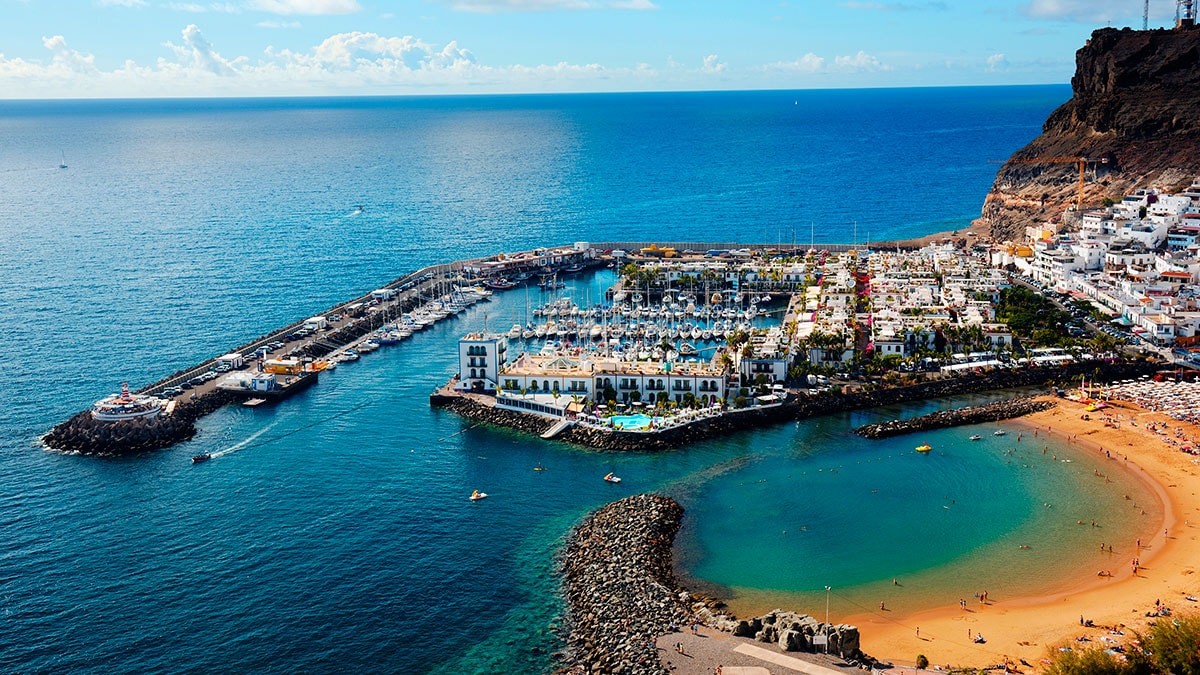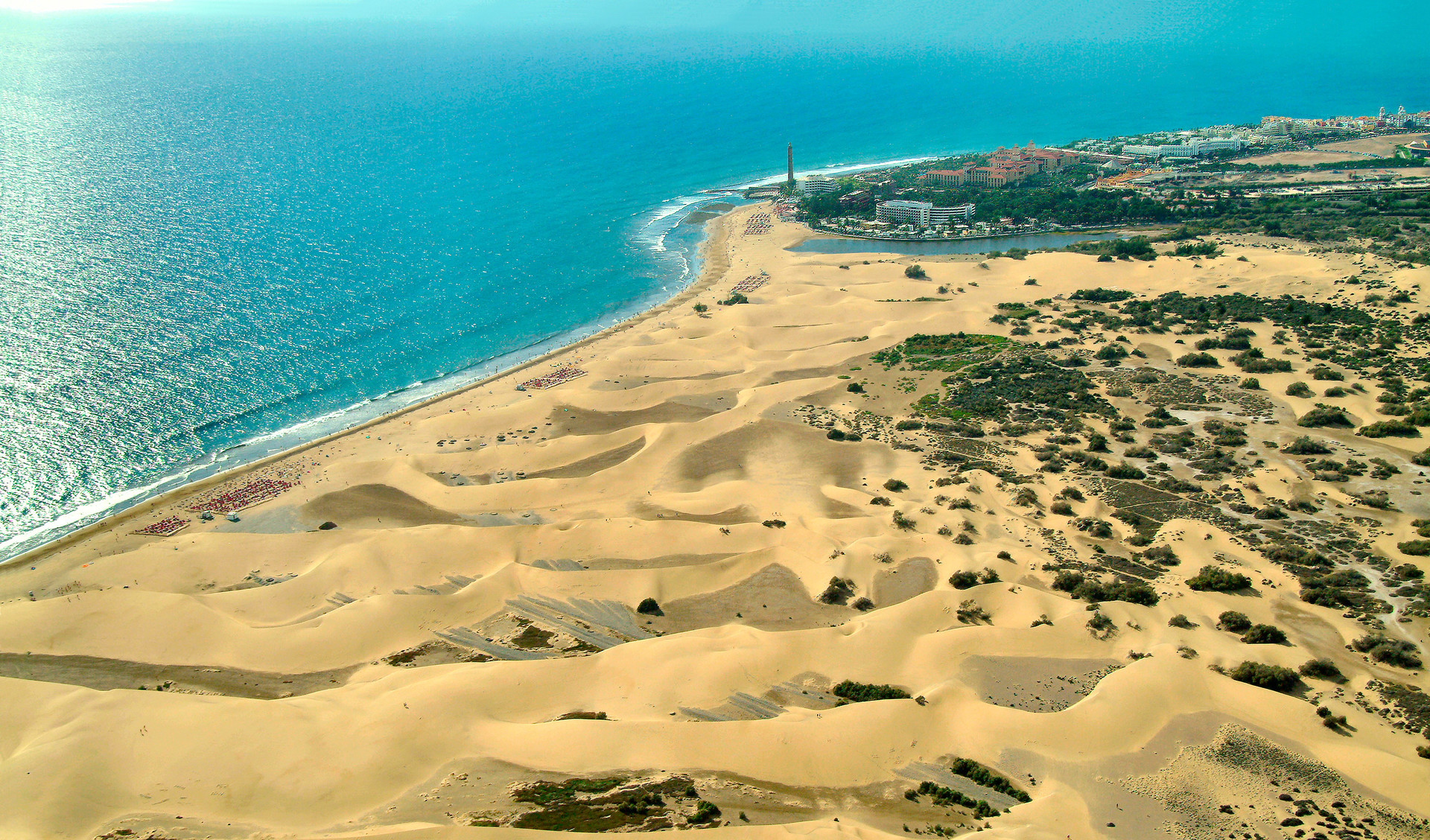Experience in Las Palmas de Gran Canaria, Spain by Cristina
What is it like to live in Las Palmas de Gran Canaria? Would you recommend it? What is the city like?
The Canary Islands are the place for enjoying at any time of the year. Seven different and unique islands with virgin beaches and lively lifestyle provide the chance to practice open air activities, sports or just relax. The city centre is situated at the northern part of the island; there, one is at the heart of the commercial and administrative zone of the island, but still in close distance to the University zone, to the old town quarter and to the beach.

What is the student lifestyle like in Las Palmas de Gran Canaria?
There is a big student community in Las Palmas de Gran Canaria. Every year, the University attracts more and more students not only from Europe but also from countries outside it for a number of reasons, including its international location, studies, services and privileged setting. Students who choose the ULPGC will discover a technologically advanced university in a privileged setting, with average annual temperatures of around 20 degrees and an active and welcoming city.
How much does it cost to live in Las Palmas de Gran Canaria?
In comparison to the Spanish peninsula, prices in Gran Canaria are significantly lower. The average monthly expenses can rise up to 600-700€, always according to the lifestyle one has. In general, house rents are cheap and one can share a flat and minimize thus the expenses. Going out is cheap as well; the old town district (Vegueta) is an awesome and picturesque place to meet friends, chat and hang out for a drink during evenings.
Is it difficult to find accommodation in Las Palmas de Gran Canaria? Is there any advice you can give?
Accommodation in las Palmas is easy to find, thanks to the relevant websites that provide accurate and direct information over housing. Many students choose to live in the student residences (which are at close distance to the University), but the majority of the students choose a shared flat. There are organisations collaborating with the University that help newcomers find accommodation, especially because most of them do not speak Spanish on their arrival. My advice is to share a flat/house with local/Spanish people, so as to improve their language skills and immerse themselves in the local culture more easily.
What is the food like? What are your favourite dishes?
The food culture in Gran Canaria is based on fish, since an island always has deep ties to the sea.
On our island there are a lot of traditional dishes prepared with fish, like the “Canary Casserole”, “Tollos” (salted and dried dogfish), “Marinated Fresh Tuna”, etc. Most of these dishes combine perfectly with green and red mojos, as well as with gofio. Among the most famous dishes I distinguish the salt-fish sweet-potato ‘sancocho’, the local speciality accompanied by the typical ‘papas arrugadas’. The cuisine of Gran Canaria is a combination of flavors from all over the world, spiced with the cultures and traditions of people who have resided here, and made with magnificent ingredients.
The climate of the island also means that there is a wide variety of fresh fruit and vegetables of exquisite quality. Mangoes, papayas, avocado pears, guavas, and of course bananas abound in the island.
What places would you recommend visiting in Las Palmas de Gran Canaria?
In Gran Canaria there is a wide range of activities both for those who enjoy the mountain and for those who enjoy the beach and the sun. The combinations are practically limitless. In the centre of the island there is the highest mountain, Roque Nublo (with an altitude of almost 2, 000m), which offers impressive views to the Canarian landscape and is an ideal destination for those loving walking. Gran Canaria is an island, so beautiful beaches can be found almost at every part of the island. Las Canteras is a must-see, as it is one of the most famous urban beaches of the world. On the southern zone, the desert of Maspalomas with the sandy peaks reminds of an African landscape and adds a tropical aspect to the island.

Is it good to eat out in Las Palmas de Gran Canaria? Can you tell us your favourite spots?
For eating out in Gran Canaria is a great option to take along the lined-up cafes and restaurants by the beach. The main eating-out zones include the Paseo Las Canteras, where one can find from local food to crepes and ice-creams. Other zones for eating out, mainly fish, are the Puerto de Mogán, Agaete and the Puerto de Las Nieves.
Is the nightlife good in Las Palmas de Gran Canaria? Where is good to go?
In Gran Canaria there are various zones for those loving to go out. Clubs and bars can be found close to the Paseo Las Canteras, with cheap drinks and nice student atmosphere. In Vegueta (old town) as well, locals usually go out to meet up with friends and drink in one of the many bars.
What advice would you give future students heading to Las Palmas de Gran Canaria?
The best advice we could give is to get to know local people, involve themselves in the local community. This way they will learn Spanish, get advice and know the place from the point of view of a person who has lived there for longer. As a whole, the exchange experience will be successful and positive!
Photo gallery
Content available in other languages
- Español: Experiencia en Las Palmas de Gran Canaria, España, por Cristina
- Polski: Doświadczenie z Las Palmas de Gran Canaria, Hiszpania oczami Cristiny
- Italiano: Esperienza a Las Palmas de Gran Canaria, Spagna, di Cristina
- Français: Expérience à Las Palmas de Grande Canarie, Espagne par Cristina.
- Português: Experiência em Las Palmas de Grande-Canária, Espanha, por Cristina
Share your Erasmus Experience in Las Palmas de Gran Canaria!
If you know Las Palmas de Gran Canaria as native, traveler or as exchange student... share your opinion on Las Palmas de Gran Canaria! Rate different characteristics and share your experience.
Add experience →

















Comments (0 comments)